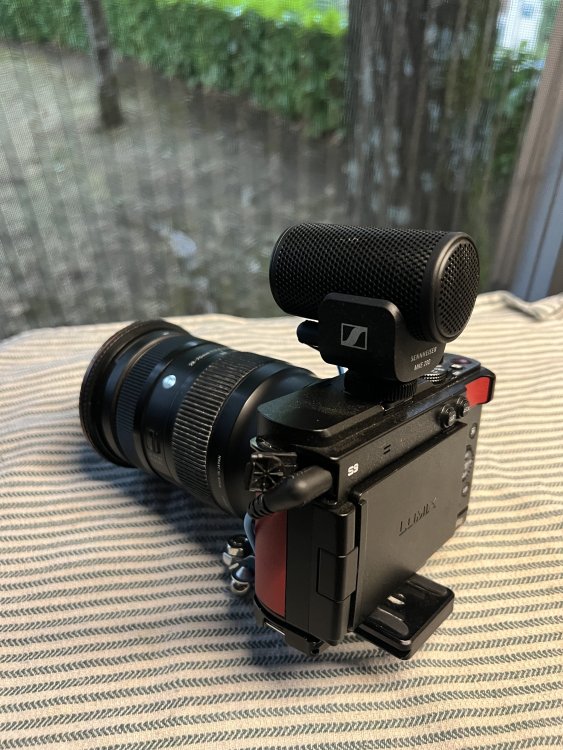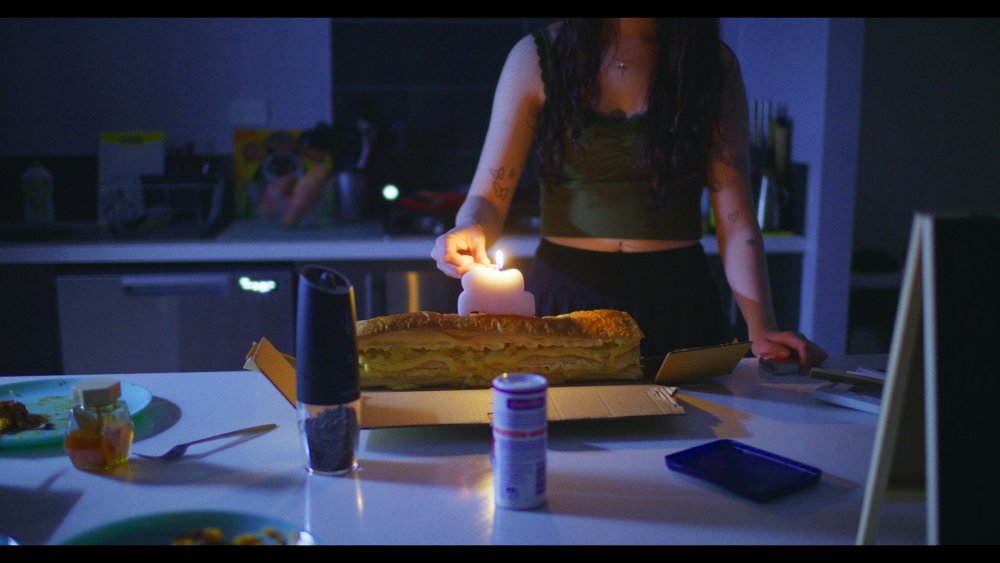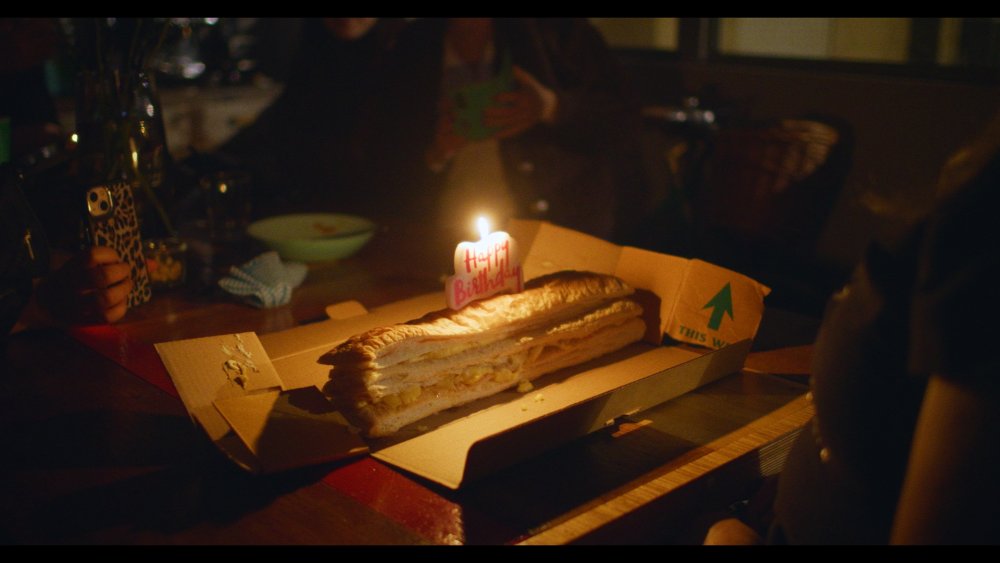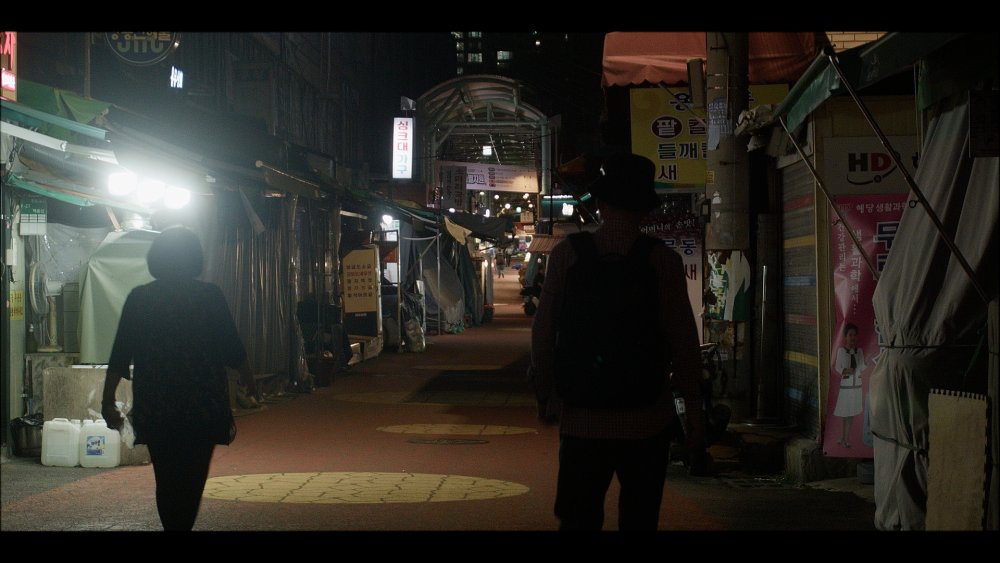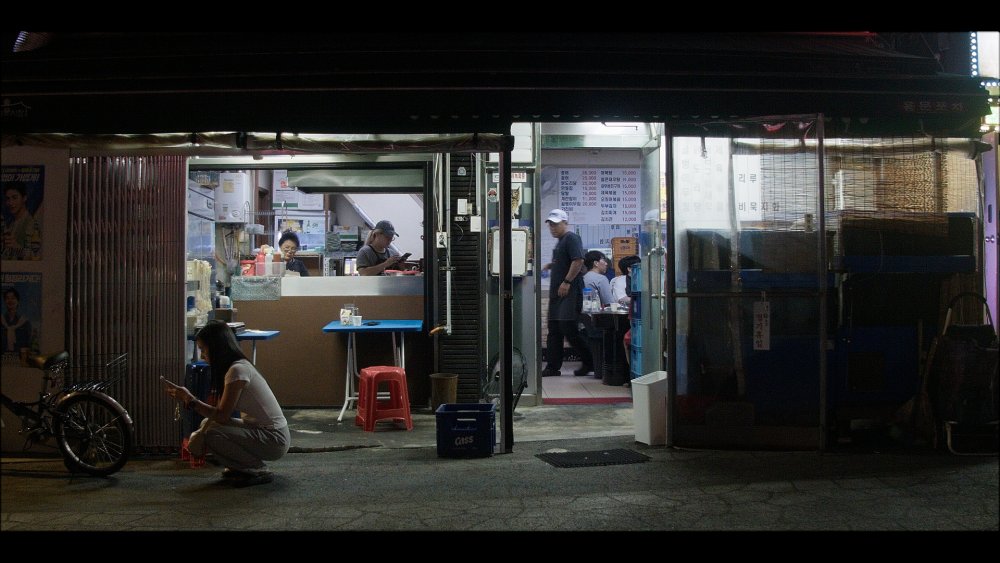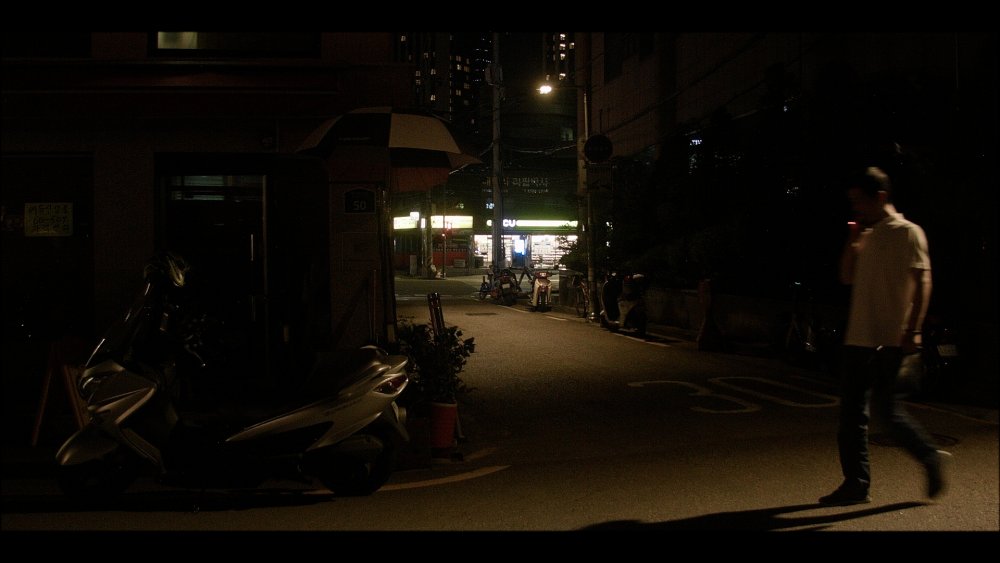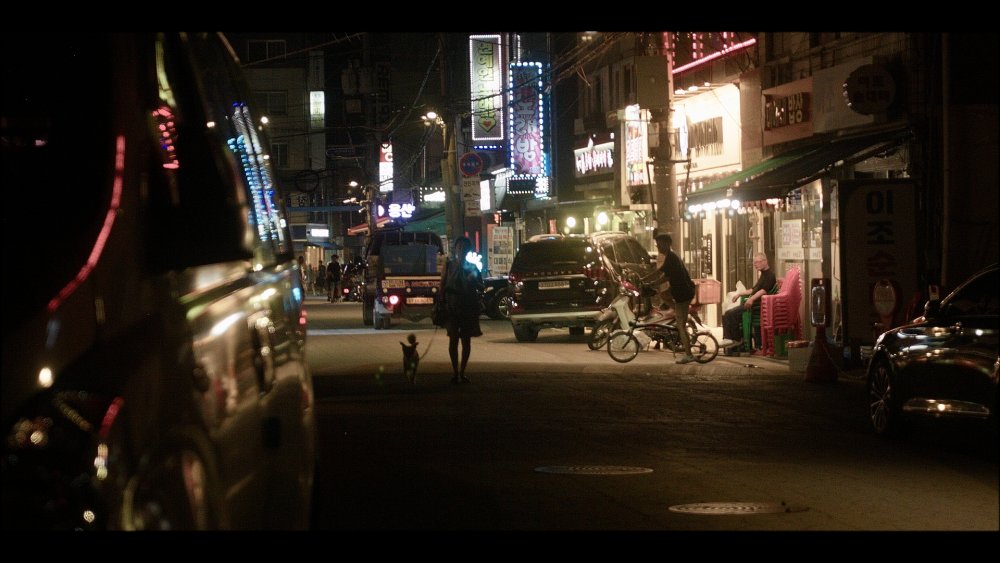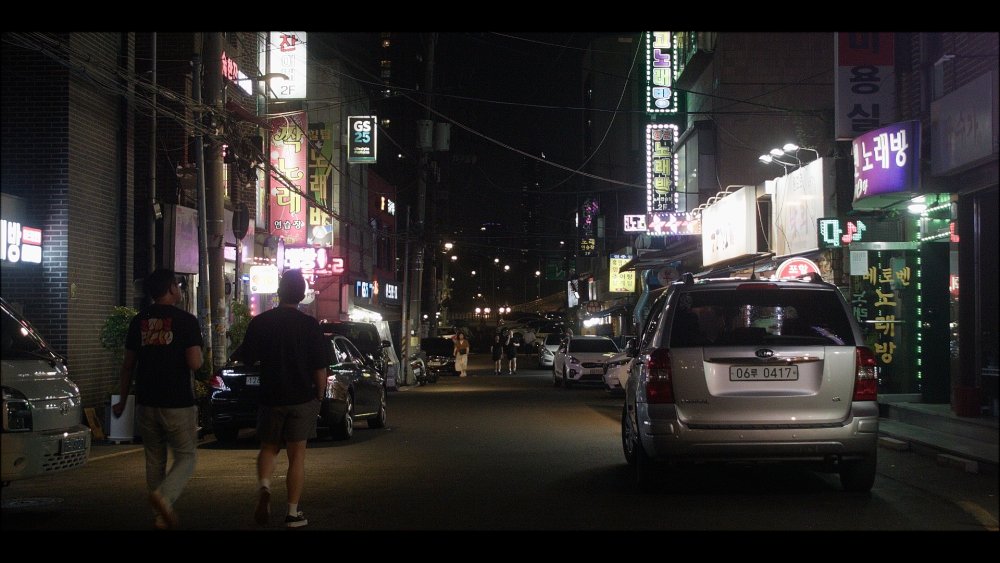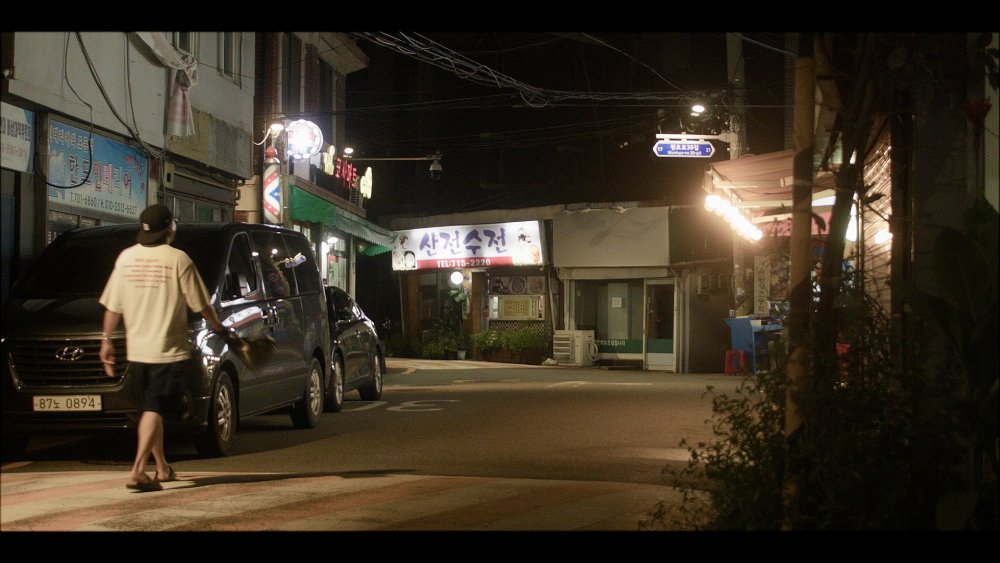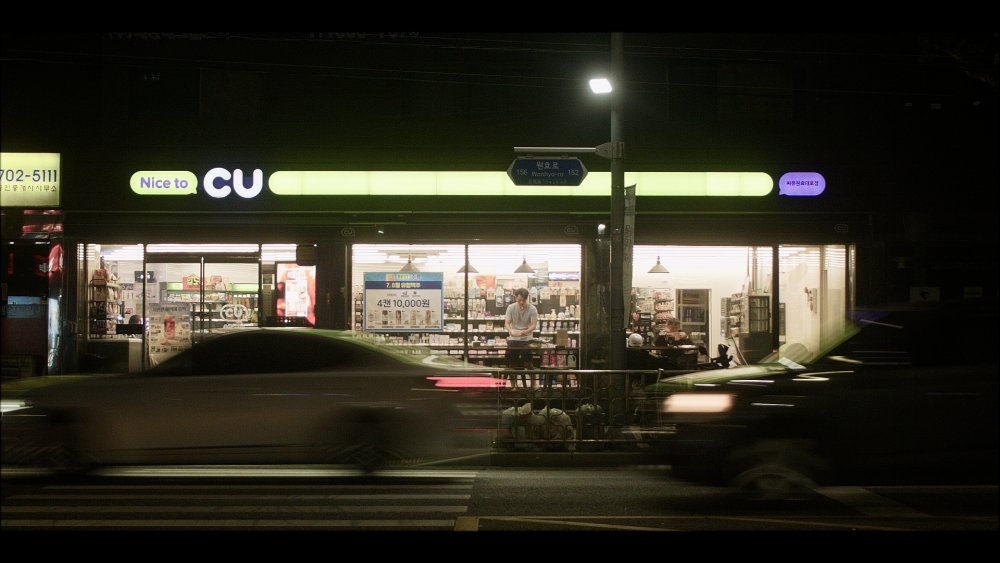All Activity
- Past hour
-
I don't really use the audio for dialogue so can't really comment on it specifically. To zoom out and think more holistically about sound, and also a bit about getting in front of the camera, there are a few approaches. High-quality sound on location. This is great but you pay for it in terms of paying for extra equipment, extra faff of charging it, setting it up, using it, cleaning and maintaining it, etc. High-quality in-camera audio is the most convenient and the most expensive to get. External audio makes it easier / cheaper but creates extra work to keep the audio files managed and to sync them in post. Acceptable sound on location. This could be through a combination of average in-camera audio and average external audio. The in-camera audio could potentially using on-camera mics like the Rode VideoMicro or a plugin Lav mic that don't require any power and are plug-and-forget but are dependent on the quality of preamps in the camera. The external audio could be as simple as using a smartphone right next to your mouth, or using the integrated mic in the headphones as a short lav mic. I've seen lots of vloggers do this in very noisy environments and it works fine. First example, second example. Record in post. ADR (Automated Dialogue Replacement) is where actors re-record their dialogue in post production to match their lips in the footage. It is so common that many films simply didn't bother to get good sound and created the audio (dialogue, sound effects, sound design, the lot) in post after the fact. I've done this before on short films and if you take a bit or time to do it then you can get results indistinguishable from doing it on-location. Recording in post also comes into the idea of appearing on screen, or not. By taking lots of notes and recording your thoughts during the trip (potentially just using voice memos on your phone at the end of each day) you can then narrate the finished film and have a significant presence in the finished edit, have high quality audio, and also take away the burden of getting great audio for everything that happens throughout the whole trip. Narrating the film will also enable you to communicate ideas and feelings and information in a concise way with carefully chosen words, rather than trying to piece together a coherent summary from fragmented snippets of footage. Narrating the final piece also takes a huge burden off the footage too, because anything you didn't capture can be explained in V/O so the film doesn't rest solely on the footage to be self-explanatory, which is a high-bar to achieve. There's a hidden mindset that you're at the cutting edge of (and being cut by), which is that the entire film-making industry assumes that anyone wanting high-quality equipment doesn't mind it being large, and that if you care about size then you don't care about quality. I've gone round and round with people online and it's like "small and good" is a combination that somehow doesn't exist in their world-view. This has lessened over recent years, but is still the elephant in the room. Speaking of the elephant in the room, be careful not to lose sight of the final prize, which is an engaging final product. I don't know how much editing experience you have, but making a doc is like making a bunch of lego pieces without knowing what you're eventually going to want to make, then designing the building, and then trying to assemble the building out of the lego blocks you have made. Obviously those with a lot of skill will be able to anticipate the final result better, and will make better pieces, but to a certain extent the more pieces you make and the more variety you include, the easier it will be to assemble the finished product you want. This is why I advocate for setups that: 1) you will use (giving you more footage) 2) is fast to use (giving you more footage of things that happen quickly) 3) is flexible (giving you more variety of footage) 4) is enjoyable to use (making you more likely to use it and also making the whole thing more enjoyable and more likely to be successful overall). Remember, this person is ready for anything, but misses almost everything switching equipment, and has a hernia by the end... You should start with the idea of just using your phone and only add equipment that will make the end result better, not worse.
- Today
-
Might/probably is a different result with Sony? But yes, I need to try Andrew’s LUT as soon as I can but mid season very difficult as it will take some work as I bake in my LUT so will need to bake in a second conversion LUT also and well, not got the time to play with that and thoroughly test at this time. But I will!
- Yesterday
-
I actually mean Andrew’s profile. I downloaded it so have a copy. I didn’t love the Phantom LUT; used neutral on my friend’s FX3 footage. IDK, he wants a very clean white grade which is great, but the skin tends to lean heavy magenta which I need to correct for. My personal work is a lot more stylized so maybe it would look better in that context.
-
If you mean the Phantom LUT, I’d suggest Neutral. Utopia is next ‘best’ but I prefer the Neutral so I can then do my own mild creative grade over the top whereas the others are more a look. I tried the official Arri Log C3 my S1Rii came with but can’t get it to look as good as the Phantom SOOC even before any twiddling, but maybe that is just me…
-
 John Matthews reacted to a post in a topic:
Camera Choice: Cycle Touring Documentary?
John Matthews reacted to a post in a topic:
Camera Choice: Cycle Touring Documentary?
-
 John Matthews reacted to a post in a topic:
Camera Choice: Cycle Touring Documentary?
John Matthews reacted to a post in a topic:
Camera Choice: Cycle Touring Documentary?
-
I’ll have to give this a try on my S9 for an upcoming shoot! Will let you know my thoughts.
-
If APSC is in the mix, FX30 would be my pick also. Lenses would need some consideration but the Sigma 18-50mm (27-75 FF equivalent) optically very good and is tiny. There is also a bigger and heavier newer lens offering 17-40 (so approx 25-60 FF) but it is f1.8 so better for low light.
-
I think a huge part of what sets Martijn's stuff apart, other than him just being very engaging and charismatic, is the aerial drone footage - seeing him cycling in some of those breath taking locations elevates the visual way above any other one man band adventure stuff I've seen. It immediately looks pro to me Love Mads Brugger's The Mole in North Korea - I think if your stories need it then for sure stepping into the camera can give scenes more gravitas, changing the dynamic. I'm sure there will be stories you come across that may need this touch, having the instinct to know where and when is part of the film makers skill in this case Ah don't get me started on Enfield adventures...
-
Fun topic! I'd be tempted to say phone & action cam for actual biking and a compact mirrorless for off-road filming/vlogging. Weight, battery life & weather sealing probably the most important factors. Overheating something you wanna avoid too. I'd be tempted to recommend Sony FX line (FX2/3/30). Why? Built-in fan (zero overheating), rugged and compact, big sensors, mounting points, pro audio, class leading AF, cine OS (LUT support, shutter angle etc) and the cameras are discrete. Model wise, the FX30 is most affordable, APS-C means smaller lenses. FX3 is most expensive, full frame and has that extreme low-light ability, minimal rolling shutter and is Netflix approved. Just released FX2 is the middle ground and the model I'm currently eyeing: Does both FF/APS-C, oversampled 4K & 33MP stills, AI AF & the unique tilt EVF (very handy for harsh exterior shooting). I saw the R5 was mentioned by OP, if he can swing it the R5ii is much better: less overheating, C-log2 and 4K SRAW (small RAW files). But it's fairly heavy vs lighter options! Also Canon has a super cheap great 28mm f2.8 pancake RF lens which could be your one and be done travel / v-log lens. Casey here actually does an awesome job comparing the R5ii / 28mm combo vs DJI Pocket3 for V-logging & street videography on skateboard:
-
It will be fine but needs either a baseplate & grip for even basic handling but better a cage from someone like Smallrig. I have the Smallrig baseplate/grip myself for my needs but if I was going anywhere rough and for more than a couple of days, the cage for sure as it’s not the most robust camera ever built. S9 + grip + Sigma 28-70mm f2.8 (42-105mm in APSC mode), Sennheiser MKE 200, mount for monopod. If I had the cage instead of the baseplate/grip, I could mount 2 accessories instead of one such as a mini LED. As it is, I just have to swap out the mic for the LED if I need it. Extremely compact and lightweight package for it’s capability but neither the body nor the lens have any proper weather sealing so IMO, this is not something to take around the world when you are inevitably going to have some inclement conditions!
-
 ntblowz reacted to a post in a topic:
Pana S9 is definition of an underrated camera
ntblowz reacted to a post in a topic:
Pana S9 is definition of an underrated camera
-
Good point. It’s been 10 years since I had a GH4 in my hands… and although not small, it was certainly smaller than the C100MkII that I went with. With that in mind, I remember that most folks loved Canon for their colour. I don’t have any experience with the R5, but a friend is running one in India across that past 3 years with zero issues.
-
Thanks John. The last camera I used at length was a C100MkII and it really had everything I needed short of a fatter codec. However I would never want to bring something this big with me cycling. Oh sure, stripped with a pancake it definitely shrank, but to the point that ‘control’ became challenging… though the NDs sure were helpful. That S9 you recommended, would you still be happy after a few wireless receivers were attached? Those would certainly raise the footprint on this small powerhouse. As an aside, does anyone make a wireless package with something like a small bolt on receiver that can handle multiple streams with minimal cable to the body? Come to think of it, it would be a bit of a godsend if camera bodies had the option to included built in wireless receivers. I guess we can always dream.
- Last week
-
Great frames that really highlight your point on the GH7 and Voigt's lowlight performance. And yes, 3 cheers for noise reduction software… and high bitrates! With some reasoning that sound is 70% of a film, how were you handling sound input into your GH7? Did you use the audio module? If so, any interesting insights worth mentioning?
-
 Tulpa reacted to a post in a topic:
Camera Choice: Cycle Touring Documentary?
Tulpa reacted to a post in a topic:
Camera Choice: Cycle Touring Documentary?
-
 Tulpa reacted to a post in a topic:
Camera Choice: Cycle Touring Documentary?
Tulpa reacted to a post in a topic:
Camera Choice: Cycle Touring Documentary?
-
 Tulpa reacted to a post in a topic:
Camera Choice: Cycle Touring Documentary?
Tulpa reacted to a post in a topic:
Camera Choice: Cycle Touring Documentary?
-
 Tulpa reacted to a post in a topic:
Camera Choice: Cycle Touring Documentary?
Tulpa reacted to a post in a topic:
Camera Choice: Cycle Touring Documentary?
-
 Tulpa reacted to a post in a topic:
Camera Choice: Cycle Touring Documentary?
Tulpa reacted to a post in a topic:
Camera Choice: Cycle Touring Documentary?
-
 Tulpa reacted to a post in a topic:
Camera Choice: Cycle Touring Documentary?
Tulpa reacted to a post in a topic:
Camera Choice: Cycle Touring Documentary?
-
 Tulpa reacted to a post in a topic:
Camera Choice: Cycle Touring Documentary?
Tulpa reacted to a post in a topic:
Camera Choice: Cycle Touring Documentary?
-
Hi Ade, thank you for stepping in with this and yes I've seen it - and his other work. I'd say that Martijn really nails it here in a way that would be challenging to top. Stepping in a bit more, and towards the narrative, most of these types of projects follow a similar story with the cyclist(s) as the main protagonist in their journey which can certainly make for a compelling story if these folks have what it takes to actually carry the story. And based on the numbers, I'd say that Martijn seem to be able to handle this rather well. In considering the approach to story, I think we'd all agree that it requires a certain amount of reckoning with oneself (and certainly one's ego) to want to attempt something similar. And in doing so, and at this point, I've reasoned that I'd probably be more comfortable putting the focus more on others I meet along the way rather than myself, but with an understanding that it would be my hand guiding the story and experience. Some have suggested that I'd be just as good in front of the lens as behind it though it's hard not to be quite so self conscious when left to one's own scrutiny. Solving this, it would probably be easier to relax and let go of the self consciousness if someone else were to take on the role of filmmaker and follow me, but these shoestring budgets just don't allow for it. I guess I'll see where things go. Does anyone else have anything to say about making the decision to step out from behind the camera? There have been several cases in documentary film history where directors had to do this to carry a story that was stuck... Nick Broomfield for one. Mads Brugger is my personal favourite in this. With his current project - building his home in the Italian Alps, I'd reason that Martijn's current Youtube success stems from the fact that so many people long for what appears to an immersive and authentic experience that harken's back to a quieter time while more connected to nature. And his sparse filmmaking approach certainly compliments this. Well done I'd have to say. It's good to hear of your Enfield adventures, it could easily be that we've passed one another on those dusty trails.
-
Ah you should check out his 'One year on a bike' film where he cycled Amsterdam to Singapore. I spent a year in India but mainly on an Enfield motor bike, should have made a film of that, got it on good old mini dv tape somewhere
-
I never have and was going to cycle from UK to India once, but in the end flew and backpacked it. I do have a few trips planned, but skipping the bike for all of them. Probably…
-
Ha I dare you. But yes it is very inspiring stuff, have done a fair few bike packing adventures but this is next level
-
Your checklist is a good start however everyone has their own perception of what defines "cinema". People have been chasing cinematic vibes long before DSLRs and mirrorless cameras were a thing. This forum has been part of that journey, evolving alongside gear and trends. Online, “cinematic” usually means widescreen bars, shallow depth of field, slow-mo coffee shots, and the latest LUT everyone’s hyped about. Anamorphic lenses are popping right now, which probably explains why a lot of camera bros are jumping ship to Lumix to chase that look. My point I guess is that there’s no single “cinema look.” Real cinema is about intention and personal choices. It’s the lighting/exposure that sets the mood, the colors that tell the story, natural dynamic range, and framing that pulls you in. The texture your gear adds, your lens choice, and how you pace things.. that’s what really gives something its look. That’s why directors like Lynch, Soderbergh, and Baker sometimes break code and ditch the big rigs for DV, iPhones, or 35mm. Not because they can’t get a polished image, but because they want immediacy, rawness, and the happy accidents you just don’t get with giant setups. Baker’s Anora used 35mm not for nostalgia, but for the discipline and energy it forces, kind of like his iPhone stuff on the reverse end of the spectrum. Whether those projects click with you visually is personal, but that doesn’t make them any less cinema. Sure, high-end productions lean on ARRI, RED, or Venice with top glass. But smaller cameras get their day too. The FX3 showed up in The Creator, F1 & Severance because of its low-light chops, portability, and multi-cam flexibility. When matched up right, it can hang with the big boys. Chasing the cinematic look is totally valid, especially if it fires up your creativity. Again, your checklist is legit, but remember it’s always evolving and should serve what you want to say. Sometimes the weird or unexpected choices end up making something fresh and your own.
-
I don't know if I dare click on that because based on just the thumbnail, I want to go and do it. Tomorrow.
-
100% agree about the size, and when compared to the GH5 the difference in the hand is a lot more than what it looks like in pictures, so it's sort-of deceptively chunky. By the time you're looking at a GH7 "small camera" territory is so far off you can't even see it in the rear-view mirror! Perhaps the compromise is that the GH7 has an integrated cooling fan whereas neither the R5 nor Z6 III have it, and will be a larger again by the time you add on additional accessories etc.
-
The reason that I've been avoiding (and maybe others have to) mentioning the GH7 has nothing to do with low light and everything to do with it being as large and heavy as a lot of FF bodies. If you're willing to go that big, you could also get an EOS R5 or a Z6 III.
-
I would check out Martijn Doolaard on Youtube, he filmed this on his own with drone and mirrorless camera and phone camera and it is seriously beautiful and high quality visually, and he has a very engaging way. He obviously has a good eye but it's amazing what can be done as a single person. He used a GH5 for this, it was a few years ago, the last 3 years he has been filming himself doing up a cabin in the Italian Alps, I think using a version of Sony A7 and drone. He releases a film each week and again it is beautiful to watch, is both mesmerising, educational, inspiring and medative, good for the soul.Highly recommend
-
I've never owned a Fuji camera myself, but one major reason I haven't is that many of their cameras don't support 'plug-in power' for external mics, which some camera-mount mics need (or can detect to perform auto mic on/off). You need to check the user manuals carefully if that's important to you. The X-M5 does appear to support it (but e.g. the X-T50 doesn't), so maybe future cameras will as well.
-
I agree completely. With smaller/lighter lenses like the Sigma 18-50 f2.8 APS-C I find the S9 well balanced and easy to hold, with left hand under the lens and right hand around the body. I have (but don't use very often) the Sirui grip, which is deeper than the Smallrig one and has a high-grip surface on the 'bump' - this is someone else's comparison photo of (top to bottom) the Sirui, JJC and Smallrig grips Even with a (small/light/decent sounding) Sennheiser MKE200 mic mounted on the cold shoe the combo still feels relatively small and light, which is exactly what I wanted when I bought the S9.
-
I can vouch for the GH7 as a workhorse. In terms of low light, I'd say it's fine. Here are a couple of stills from the GH7 with the Voigt 17.5mm F0.95 lens. I can't remember if the lens was fully wide-open or not, but I think the GH7 was at ISO 1600? These have a film grain applied, so the grain is deliberate. GH7 ISO tests are available online if you want to see the grain at various settings. Also remember that NR exists in post, and compression does a pretty good job of NR as well. The first shot is lit from the candle and the light of the fridge: and this is just the candle: Here's are some shots from the OG BMMCC from 2014 at its base ISO of 800, the 12-35mm F2.8 lens and shot at a 360 shutter to cheat an extra stop. These locations looked about this bright with the naked eye, and I have excellent night vision. You actually need far less low-light performance than most people think. Thanks! The issue is that you're either showing a very wide FOV, which will have significant distortions, or you're cropped in to the point where the quality is low because you're cropping out most of the data. IIRC, If you have a 100Mbps 360 image then by the time you crop to the FOV of a 24mm lens you're down to something like only a few Mbps. This is why I said the bitrates are what matters most.
-
I never used the GH7, only the GH6, but I found it to be great in low light; just not "no light" situations. Both of those cameras are mostly about 4k 120fps. The GH7 is about that and the AF in video and Hybrid Zoom. If the cost and size aren't the determining factors, the GH7 is the most fully-featured M43 camera for video today. Want the same features as the GH7? Go for the G9ii something smaller and cheaper, just no insanely long clips. In fact, the G9ii might be my last M43 camera as I don't see a point in anything more.




